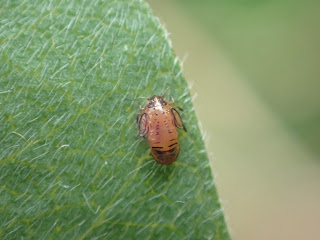Mid June 2023
It had been several years since I had visited Carlton Marshes SWT reserve near Lowestoft, indeed a whole cafe and education centre had been built in the meantime. Despite not venturing too far out on the reserve there was a lot to see, the highlight of which was probably my first Rosy Woodlouse, Androniscus dentiger. Prior to my visit I had seen a smut fungus found on sedges (Farysia thuemenii) mentioned, and these things often tend to have good and bad years, so I checked some sedges and low-and-behold found absolutely loads of it. A third new species was Cyperus Sedge, which was common along the edges of the dykes.


















































